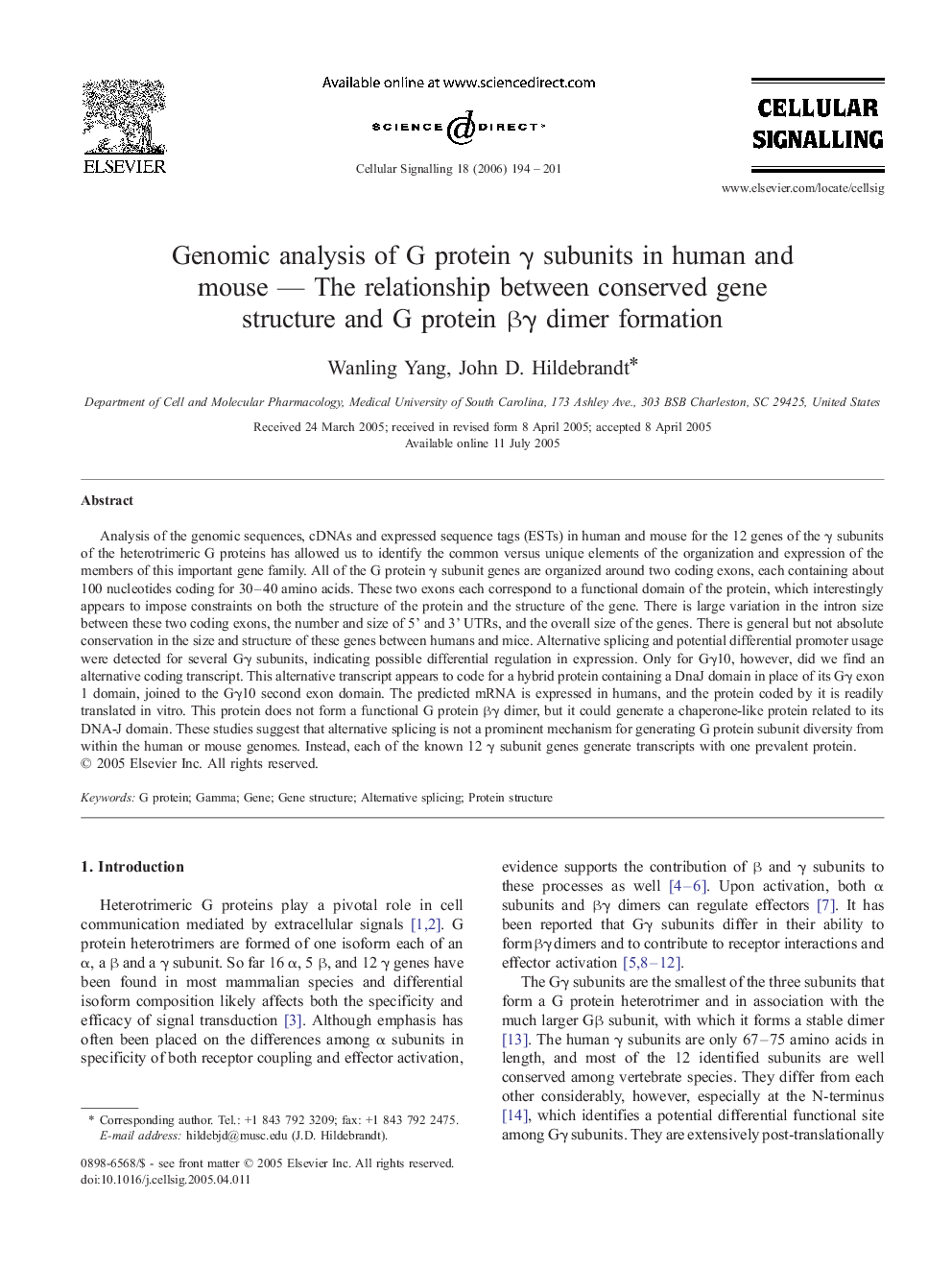| کد مقاله | کد نشریه | سال انتشار | مقاله انگلیسی | نسخه تمام متن |
|---|---|---|---|---|
| 1964722 | 1058573 | 2006 | 8 صفحه PDF | دانلود رایگان |

Analysis of the genomic sequences, cDNAs and expressed sequence tags (ESTs) in human and mouse for the 12 genes of the γ subunits of the heterotrimeric G proteins has allowed us to identify the common versus unique elements of the organization and expression of the members of this important gene family. All of the G protein γ subunit genes are organized around two coding exons, each containing about 100 nucleotides coding for 30–40 amino acids. These two exons each correspond to a functional domain of the protein, which interestingly appears to impose constraints on both the structure of the protein and the structure of the gene. There is large variation in the intron size between these two coding exons, the number and size of 5' and 3' UTRs, and the overall size of the genes. There is general but not absolute conservation in the size and structure of these genes between humans and mice. Alternative splicing and potential differential promoter usage were detected for several Gγ subunits, indicating possible differential regulation in expression. Only for Gγ10, however, did we find an alternative coding transcript. This alternative transcript appears to code for a hybrid protein containing a DnaJ domain in place of its Gγ exon 1 domain, joined to the Gγ10 second exon domain. The predicted mRNA is expressed in humans, and the protein coded by it is readily translated in vitro. This protein does not form a functional G protein βγ dimer, but it could generate a chaperone-like protein related to its DNA-J domain. These studies suggest that alternative splicing is not a prominent mechanism for generating G protein subunit diversity from within the human or mouse genomes. Instead, each of the known 12 γ subunit genes generate transcripts with one prevalent protein.
Journal: Cellular Signalling - Volume 18, Issue 2, February 2006, Pages 194–201